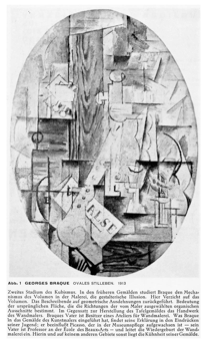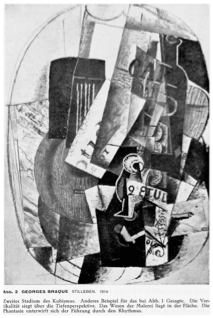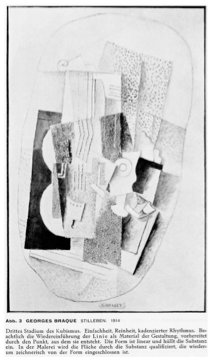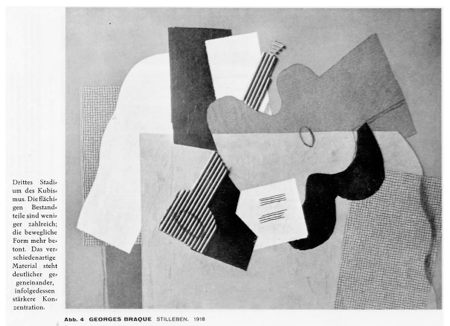Georges Braque
 1. Georges Braque: Oval Still Life, 1913
1. Georges Braque: Oval Still Life, 1913
Second phase of Cubism. In his earlier pictures, Braque studied the mechanism of volume in painting - the plastic means that are used to create an illusion. Here, the volume has been abandoned. The descriptive element has been reduced to a matter of geometrical extensions. Importance given to the flat surface which determines the directions of the organic element chosen by the painter. It is the craft of a mural painter in opposition to the production of easel painting. Braque's father owned a painter-decorator's shop. What Braque introduced into artistic painting can be explained by the impressions he received in his youth. He influences Picasso, who had been brought up in the shadow of the museums - Picasso's father taught in an art college. So, Braque has contributed towards the renewal of mural painting. It is there, and nowhere else, that the boldness of his painting is to be found.

2. Georges Braque: Still Life, 1914
Second phase of Cubism. Another example of what has been said with regard to Illustration 1. Verticality is triumphant over perspective depth. It is in the qualities of the surface that the essence of the painting lies. The painter's fantasy is obliged to submit to the directions given by the rhythm.

3. Georges Braque: Still Life, 1914
Third phase of Cubism. Simplicity, purity, cadenced rhythm. The return of line as a plastic means should be noted. Its way is prepared by, and it itself arises out of, the point. The substance of the painting is enclosed in the form, which is linear. So, in the painter's work, the surface is qualified by the substance which, in its turn, is then wrapped up within the form.

4. Georges Braque: Still Life, 1918
Third phase of Cubism. The elements arising out of the surface are less numerous. There is more of an emphasis on the mobility of the form. The diversity of the materials and their reciprocal relations are indicated more clearly and this allows for a greater degree of concentration.